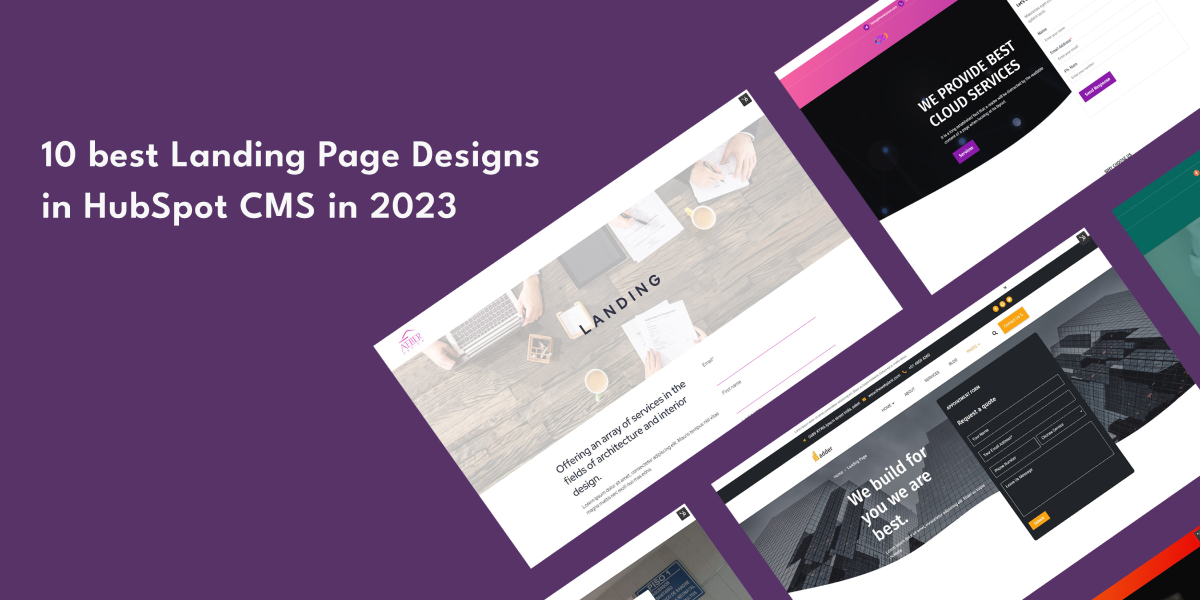
Harnessing HubDB for Creating Dynamic Pages in HubSpot
If you’ve ever wanted to manage dozens of similar pages without manually updating each one — or if you’re tired of copying and pasting repeating content — HubDB is your solution.
HubDB is HubSpot's dynamic content management tool that lets you:
- Create tables of structured content (like a spreadsheet)
- Build pages that automatically update when the data changes
- Filter and display information dynamically based on URL parameters, categories, or tags
Whether you're managing a team directory, product catalog, events list, or service location pages — HubDB lets you build it once and scale infinitely.
In this guide, you'll learn:
- What HubDB is and how it works
- Use cases for marketing and development teams
- How to build a dynamic page using HubDB
- Best practices for scalability and SEO
What Is HubDB?
HubDB is a database-like feature inside HubSpot CMS that stores rows of structured data — similar to an Excel sheet or a Google Sheet.
Each row represents a record (e.g., a team member, product, case study), and each column holds specific data (e.g., name, photo, link, description, tags).
You can then connect this data to a dynamic template and generate pages or page sections that update automatically when the table changes.

Common Use Cases for HubDB
| Use Case | What It Powers |
| Team Directory | Dynamic bios with images, roles, and links |
| Product Listings | Pages that pull from pricing, features, tags |
| Case Study Library | Filter by industry, client size, or results |
| Event Calendar | List of upcoming events with dates & locations |
| Location Pages | City/state-based pages for SEO & relevance |
| Pricing Tables | Plans and tiers editable in one place |
| FAQ Database | Centralized, taggable content for Help Centers |
How Dynamic Pages Work in HubSpot with HubDB
Dynamic pages use a HubDB-powered template where:
- One template generates multiple URL paths (e.g., /team/jane-doe, /team/john-smith)
- The content of each page is pulled from the table row assigned to it
You can add filtering logic and display content using HubL, HubSpot’s templating language.
Example:
- Table = "Team Members"
- URL pattern = /team/{name}
- Data automatically renders based on URL and table match
One template = hundreds of dynamically generated pages — all manageable from a single table.
Step-by-Step: How to Set Up HubDB Dynamic Pages
Step 1: Create a HubDB Table
- In HubSpot, go to Marketing > Files and Templates > HubDB
- Click “Create Table”
- Define your columns (text, rich text, image, URL, dropdown, number, boolean, etc.)
- Enable "Use for dynamic pages"
- Choose the column that will generate the dynamic URL slug (e.g., team-member name)
Add tags or filters if you plan to let users filter content later (like by category or location).
Step 2: Design a Dynamic Template
- Go to Marketing > Files and Templates > Design Tools
- Create a new page template
- Use HubL (HubSpot Markup Language) to:
- Query HubDB rows
- Output variables dynamically
- Use conditionals and filters for personalization
You can also apply CSS classes and JavaScript for interactivity.
Step 3: Configure Dynamic Page Settings
In the HubDB table settings, define:
- The dynamic URL structure (e.g., /case-studies/{row-name})
- The HubSpot template it should use
- Meta title/description (optional via table columns)
Once configured, HubSpot will automatically:
- Generate a unique page for each row
- Insert the appropriate content into the template
Step 4: Configure Dynamic Page Settings
set teamMember = hubdb_table_rows(12345)
for member in teamMember
<h2></h2>
<img src="">
<p></p>
endfor
SEO Benefits of HubDB-Powered Pages
When done right, dynamic pages can be SEO goldmines — especially for long-tail keywords and localized targeting.
SEO Best Practices:
- Use a clean URL structure (/services/web-design, not /services?id=123)
- Customize meta titles/descriptions using table columns
- Include internal links to other dynamic pages
- Submit the sitemap for dynamic pages to Google via HubSpot CMS
- Use content blocks (like testimonials or case studies) that vary by row
HubDB lets you scale SEO without duplicate content — every page is indexable and uniquely valuable.
Advanced HubDB Tips
- Use filters (hubdb_table_rows(table_id, "column", "value")) for conditional outputs
- Connect multiple tables together for nested data relationships
- Use date filters for event expiration or upcoming-only listings
- Manage table edits in bulk using HubSpot’s API or CSV import
- Lock rows or tables with user permissions
Final Thoughts
HubDB is one of the most underused but powerful tools in the HubSpot ecosystem.
It lets you:
- Create scalable, editable content libraries
- Reduce repetitive page building
- Enable marketers to update data without developers
- Improve site SEO and UX with data-driven, dynamic layouts
If your website is becoming hard to maintain — or your team wants to scale smarter — HubDB might be your answer.
Call to Action
Want help building dynamic pages with HubDB?
We help teams:
- Structure HubDB tables for growth and SEO
- Design dynamic templates that scale
- Train marketers to manage content without dev support
You might also like
What Is HubSpot CMS Hub? A Beginner’s Guide 2025
Introduction If you're a growing business looking to scale your digital presence, improve your lead generation, and reduce dependence on developers, then HubSpot CMS Hub is a platform you should definitely consider.
10 best Landing Page Designs in HubSpot CMS in 2023
For the majority of startups, landing pages serve as the representation of their company's identity.
Empower HubSpot Forms with Whatsapp Automation
Unlock the power of automated Whatsapp messages for your HubSpot forms and engage your audience like never before.







Leave a reply